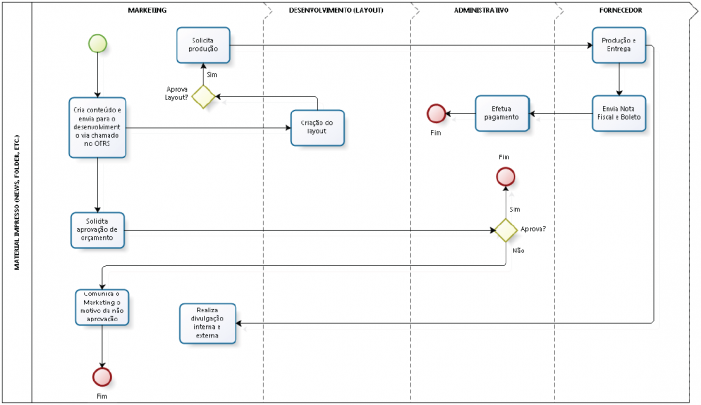BPMN in practice!
The evolution of the corporate environment and globalization have provided the structuring of increasingly complex and comprehensive business, divided into sectors and branches. Setting the corporations’ working model may not be an easy task, for it is necessary to present it to employees and other members who are not used to the technical terms, processes and activities. The modeling of business processes with BPM defines, makes it possible and manages the exchange of information in organizations through the semantic view of a business process, involving employees, customers, partners, applications and databases.
To facilitate this process of understanding, a tool called Business Process Model and Notation (BPMN) was developed. As its name implies, BPMN is a record designed to define and manage processes in the business sphere. This notation was created by the Business Process Management Initiative and is currently maintained by the Object Management Group, after merging the two organizations.

BPMN uses diagrams to represent business processes through a predefined set of icons that facilitate the understanding of the process, regardless of the users’ technical knowledge.
BPMN main elements
The business model defined by the Business Process Model and Notation consists basically of four graphics whose diagrams present the entire flow, activities and key decisions. They are:
Flow objects
Flow objects are the basic elements in creating a model based on the BPMN notation. They represent the main events, activities and decisions that make up the model. It can be considered the most important stage of BPMN.
Connection objects
Connection objects define the relationship between the flow objects and other elements in commercial activities. They may be a flow of sequence, messages or an association between business data.
Swim lane (or swimlane diagram)
When the model is very complex, there is a need to divide it into categories and, therefore, a swim lane is used, which can be divided into pools and lanes. Pools are used to represent business entities. Lanes are subdivisions of pools used to further categorize the entities.
Artifacts
BPMN artifacts are adopted to group information that is important to the business model. They can be input and output data or information about a certain event or activity (Flow Objects). This information serves to provide additional documentation to the scheme.
Main tools for modeling
There are in the market several appropriate tools for modeling business based on BPMN. The most used are: Oryx, Tibco Business Studio, Aris Express, Process Maker, Open ModelSphere and Intalio. They facilitate teamwork, enabling remote collaboration from members and increasing the flow of organizational information.
The choice of the tool must occur according to the need and the learning curve, and the resources may vary among them, as is the case of Oryx, that supports other modeling languages such as EPC and Xforms. As for Open ModelSphere, it has a GPL license and its code is free for distribution and modifications. In addition, it also supports the creation of other diagrams, such as UML.
With BPMN it is possible to represent any business flow by automating it and optimizing it. Improvements can also be implemented whenever necessary. All this in a language that is easy to understand by everyone, from the technical and operational sector employees to the highest level of the organization.
Now that you’ve learned how BPMN can become a much more understandable business model, it’s time to apply it. If you want to know more about the Business Process Model, click here to read our other post on the subject.
Another way to build a business process modeling can be through the OpMon dashboards editor, that enables you to create visual panels with proactive and real-time monitoring of performance of all indicators.








